目次
大木毅『独ソ戦 絶滅戦争の惨禍』概要と感想~第二次世界大戦、独ソ戦の入門書に最適!
今回ご紹介するのは2019年に岩波書店より出版された大木毅著『独ソ戦 絶滅戦争の惨禍』です。
この本は今とても売れているそうで、2020年新書大賞の1位を獲得しました。
独ソ戦をテーマにした本がここまで売れるというのはそれだけでも興味深い現象です。それだけ全体主義や戦争への関心が高まっているということなのでしょうか。
さて、早速この本の内容を見ていきましょう。
「これは絶滅戦争なのだ」。ヒトラーがそう断言したとき、ドイツとソ連との血で血を洗う皆殺しの闘争が始まった。日本人の想像を絶する独ソ戦の惨禍。軍事作戦の進行を追うだけでは、この戦いが顕現させた生き地獄を見過ごすことになるだろう。歴史修正主義の歪曲を正し、現代の野蛮とも呼ぶべき戦争の本質をえぐり出す。
Amazon商品紹介ページより
独ソ戦の特徴で際立つのはそれが「絶滅戦争」であったという点です。これはどういうことなのか、「はじめに」より引用します。
独ソ戦を歴史的にきわだたせているのは、そのスケールの大きさだけではない。独ソともに、互いを妥協の余地のない、滅ぼされるべき敵とみなすイデオロギーを戦争遂行の根幹に据え、それがために惨酷な聞争を徹底して遂行した点に、この戦争の本質がある。およそ四年間にわたる戦いを通じ、ナチス・ドイツとソ連のあいだでは、ジェノサイドや捕虜虐殺など、近代以降の軍事的合理性からは説明できない、無意味であるとさえ思われる蛮行がいくども繰り返されたのである。そのため、独ソ戦の惨禍も、日本人には想像しにくいような規模に達した。
岩波書店、大木毅『独ソ戦 絶滅戦争の惨禍』Pⅱーⅲ
そして独ソ戦の想像を絶する巨大な規模を日本の戦争と比較してこう語ります。
まず、比較対照するために、日本の数字を挙げておこう。1939年の時点で、日本の総人口は約7138万人であった。ここから動員された戦闘員のうち、210万ないし230万名が死亡している。さらに、非戦闘員の死者は55万ないし80万人と推計されている。充分に悲惨な数字だ。けれども、独ソ両国、なかんずくソ連の損害は桁がちがう。
ソ連は1939年の段階で、1億8879万3000人の人口を有していたが、第二次世界大戦で戦闘員866万8000ないし1140万名を失ったという。軍事行動やジェノサイドによる民間人の死者は450万ないし1000万人、ほかに疫病や飢餓により800万から900万人の民間人が死亡した。死者の総数は、冷戦時代には、国力低下のイメージを与えてはならないとの配慮から公式の数字として2000万人とされていた。しかし、ソ連が崩壊し、より正確な統計が取られるようになってから上方修正され、現在では2700万人が失われたとされている。
対するドイツも、1939年の総人口6930万人から、戦闘員444万ないし531万8000名を死なせ、民間人の被害も150万ないし300万人におよぶと推計されている(ただし、この数字は独ソ戦の損害のみならず、他の戦線でのそれも含む)。
このように、戦闘のみならず、ジェノサイド、収奪、捕虜虐殺が繰り広げられたのである。人類史上最大の惨戦といっても過言ではあるまい。
※漢数字を算用数字照するために、日本の数字を挙げておこう。1939年の時点で、日本の総人口は約7138万人であった。ここから動員された戦闘員のうち、210万ないし230万名が死亡している。さらに、非戦闘員の死者は55万ないし80万人と推計されている。充分に悲惨な数字だ。けれども、独ソ両国、なかんずくソ連の損害は桁がちがう。
ソ連は1939年の段階で、1億8879万3000人の人口を有していたが、第二次世界大戦で戦闘員866万8000ないし1140万名を失ったという。軍事行動やジェノサイドによる民間人の死者は450万ないし1000万人、ほかに疫病や飢餓により800万から900万人の民間人が死亡した。死者の総数は、冷戦時代には、国力低下のイメージを与えてはならないとの配慮から公式の数字として2000万人とされていた。しかし、ソ連が崩壊し、より正確な統計が取られるようになってから上方修正され、現在では2700万人が失われたとされている。
対するドイツも、1939年の総人口6930万人から、戦闘員444万ないし531万8000名を死なせ、民間人の被害も150万ないし300万人におよぶと推計されている(ただし、この数字は独ソ戦の損害のみならず、他の戦線でのそれも含む)。
このように、戦闘のみならず、ジェノサイド、収奪、捕虜虐殺が繰り広げられたのである。人類史上最大の惨戦といっても過言ではあるまい。
※漢数字を算用数字に書き換えました
岩波書店、大木毅『独ソ戦 絶滅戦争の惨禍』Pⅲーⅳ
独ソ戦のこの規模は衝撃ですよね。特にソ連における犠牲者数が尋常ではありません。2700万人の死者を出したのがこの独ソ戦だったのです。
この本では独ソ戦がなぜ始まったのか、そしてどのように進んで行ったかがわかりやすく解説されています。
そしてこの戦争における巨大な戦闘、モスクワ攻防戦、レニングラード包囲戦、スターリングラード攻囲戦についても解説していきます。独ソ戦の勝敗を決定づけるこれらの巨大な戦いとは一体どんなものだったのか。信じられないほどの犠牲者を出した圧倒的な戦いを私たちは知ることになります。
「独ソ戦の全体像を知る」
「なぜ独ソ戦はこんなにも犠牲者を出すことになったのか」
という二本の柱ががっちりとこの本を支えています。
わかりやすく、そして読みやすい!そして新書サイズの本で巨大な独ソ戦がコンパクトにまとめられているのもありがたいです。これはすごいことだと思います。
独ソ戦を学ぶ入り口として最適な本です。この戦争の全体像をざっくりと把握することができます。とてもおすすめな1冊です。
以上、「大木毅『独ソ戦 絶滅戦争の惨禍』独ソ戦の入門書におすすめ!」でした。
Amazon商品ページはこちら↓
独ソ戦 絶滅戦争の惨禍 (岩波新書)
次の記事はこちら
あわせて読みたい
神野正史『世界史劇場 第二次世界大戦 熾烈なるヨーロッパ戦線』あらすじと感想~WW2の流れを掴むのに...
複雑怪奇な国際情勢をこの本では学べます。そして単に出来事の羅列ではなくなぜ歴史がそのように動いたのかという「なぜ」を神野氏は強調していきます。ここが『世界史劇場』シリーズの素晴らしいところだと思います。単なる暗記ではなく、「なぜ」を考える思考力を鍛えてくれるところにこの本の特徴があると私は思っております。非常におすすめな一冊です。
前の記事はこちら
あわせて読みたい
私達日本人が今あえて独ソ戦を学ぶ意義ー歴史は形を変えて繰り返す・・・
戦争がいかに人間性を破壊するか。
いかにして加害者へと人間は変わっていくのか。
人々を戦争へと駆り立てていくシステムに組み込まれてしまえばもはや抗うことができないという恐怖。 平時の倫理観がまったく崩壊してしまう極限状態。
独ソ戦の凄まじい戦禍はそれらをまざまざと私たちに見せつけます。
もちろん太平洋戦争における人々の苦しみを軽視しているわけではありません。 ですが、あえて日本から離れた独ソ戦を学ぶことで戦争とは何かという問いをより客観的に学ぶことができます。だからこそ私はあえて独ソ戦を学ぶことの大切さを感じたのでした。
独ソ戦おすすめ参考書一覧はこちら
あわせて読みたい
独ソ戦のおすすめ参考書16冊一覧~今だからこそ学びたい独ソ戦
この記事では独ソ戦を学ぶのにおすすめな参考書を紹介していきます。
独ソ戦は戦争の本質をこれ以上ないほど私たちの目の前に突き付けます。
なぜ戦争は起きたのか。戦争は人間をどう変えてしまうのか。虐殺はなぜ起こるのかということを学ぶのに独ソ戦は驚くべき示唆を与えてくれます。私自身、独ソ戦を学び非常に驚かされましたし、戦争に対する恐怖を感じました。これまで感じていた恐怖とはまた違った恐怖です。ドラマや映画、ドキュメンタリーで見た「被害者的な恐怖」ではなく、「戦争そのものへの恐怖」です。
関連記事
あわせて読みたい
A・ナゴルスキ『モスクワ攻防戦ー20世紀を決した史上最大の戦闘』あらすじと感想~独ソ戦をもっと知るな...
本書は独ソ戦をもっと知りたい方にはとてもおすすめな本です。 写真や図も豊富で当時の様子をイメージしやすくなっています。
そして何より、読み物としてとても面白いです。なぜモスクワ攻防戦は世界最大規模の戦闘となったのか。なぜ兵士たちは無駄死にしなければならなかったのか。
無敵と思われたドイツ軍がなぜ敗北したのかということがドラマチックに語られていきます。
あわせて読みたい
『レニングラード封鎖 飢餓と非情の都市1941-1944』あらすじと感想~80万人以上の餓死者を出したサン...
この本はあまりにショッキングです。かなり強烈な描写が続きます。地獄のような世界でレニングラード市民は生きていかなければなりませんでした。市民が飢えていき、どんどん死んでいく様子がこの本では語られていきます。生き残るために人々はどんなことをしていたのか。そこで何が起きていたのか。その凄まじさにただただ呆然とするしかありません。80万人以上の餓死者を出したというその惨状に戦慄します・・・
あわせて読みたい
『スターリングラード―運命の攻囲戦1942-1943』あらすじと感想~独ソ戦最大級の市街戦を描いた戦争ノン...
モスクワ攻防戦が郊外での防衛戦であり、レニングラードの戦いは包囲戦でした。それに対しこの戦闘はスターリングラード周辺地域だけでなく大規模な市街戦となったのが特徴です。空爆と砲撃で廃墟となった街の中で互いに隠れ、騙し合い、壮絶な戦闘を繰り広げたのがこの戦いでした。スターリングラードの死者はソ連側だけで80万人を超えると言われています。
独ソ戦のあまりの規模に衝撃を受けることになった読書でした。
あわせて読みたい
A・ビーヴァー『ベルリン陥落 1945』あらすじと感想~ソ連の逆襲と敗北するナチスドイツの姿を克明に描...
著者のアントニー・ビーヴァーは前回の記事で紹介した『スターリングラード運命の攻囲戦1942‐1943』の著者でもあります。今作でも彼の筆は絶品で、ぐいぐい読まされます。ソ連の逆襲とナチスが決定的に崩壊していく過程がこの本では語られていきます。
ナチス、ソ連両軍ともに地獄のような極限状態の中、どのような行為が行われていたのか。この本で目にする内容はあまりに悲惨です。
あわせて読みたい
アレクシエーヴィチ『戦争は女の顔をしていない』あらすじと感想~独ソ戦を体験した女性達の声に聴くー...
この本はアレクシエーヴィチが独ソ戦に従軍、あるいは戦禍を被った女性にインタビューし、その記録を文章化したものになります。独ソ戦という巨大な歴史の中では個々の人間の声はかき消されてしまいます。特に、女性はその傾向が顕著でした。戦争は男のものだから女は何も語るべきではない。そんな空気が厳然として存在していました。
そんな中アレクシエーヴィチがその暗黙のタブーを破り、立ち上がります。アレクシエーヴィチはひとりひとりに当時のことをインタビューし、歴史の闇からその記憶をすくいあげていきます。
あわせて読みたい
神野正史『世界史劇場 第二次世界大戦 熾烈なるヨーロッパ戦線』あらすじと感想~WW2の流れを掴むのに...
複雑怪奇な国際情勢をこの本では学べます。そして単に出来事の羅列ではなくなぜ歴史がそのように動いたのかという「なぜ」を神野氏は強調していきます。ここが『世界史劇場』シリーズの素晴らしいところだと思います。単なる暗記ではなく、「なぜ」を考える思考力を鍛えてくれるところにこの本の特徴があると私は思っております。非常におすすめな一冊です。
あわせて読みたい
横手慎二『スターリン 「非道の独裁者」の実像』あらすじと感想~スターリン入門におすすめの一冊
この本は単純にスターリンを大悪人として断罪するのではなく、なぜロシア人は今でもなお彼を評価するのだろうかという観点を軸にスターリンとは何者かを解説していきます。
スターリン入門として読みやすく、偏りのない記述ですのでこの本はおすすめです。
あわせて読みたい
モンテフィオーリ『スターリン 赤い皇帝と廷臣たち』あらすじと感想~ソ連の独裁者スターリンとは何者だ...
この作品の特徴は何と言っても人間スターリンの実像にこれでもかと迫ろうとする姿勢にあります。スターリンだけでなく彼の家族、周囲の廷臣に至るまで細かく描写されます。
スターリンとは何者だったのか、彼は何を考え、何をしようとしていたのか。そして彼がどのような方法で独裁者へと上り詰めたのかということが語られます。
あわせて読みたい
(5)独ソ戦中のスターリンとナチスドイツに反撃するソ連軍の地獄絵図のごとき復讐戦
独ソ戦が始まり、強力なドイツ軍に対抗するためにスターリンはある政令を制定します。それが上記のNKGB命令第二四六号と政令第二七〇号でした。
これによりソ連兵は政府に自分の家族を人質に取られたと同等になります。家族を殺されたくなければ戦え。逃げたらお前も家族も皆処刑する。死ぬまで戦わず敵の捕虜となった時も家族を逮捕する。だから死ぬ気で戦え。
こうしてソ連は兵士を戦地に送り続けていたのでした。
そしてソ連の反撃が始まります。これがまさに戦争の恐怖を体現した地獄のような有様となったのでした・・・
あわせて読みたい
ノーマン・M・ネイマーク『スターリンのジェノサイド』あらすじと感想~スターリン時代の粛清・虐殺とは
この本ではスターリンによる大量殺人がどのようなものであったかがわかりやすく解説されています。
ナチスによるホロコーストは世界的にも非常によく知られている出来事であるのに対し、スターリンによる粛清は日本ではあまり知られていません。なぜそのような違いが起きてくるのかということもこの本では知ることができます。
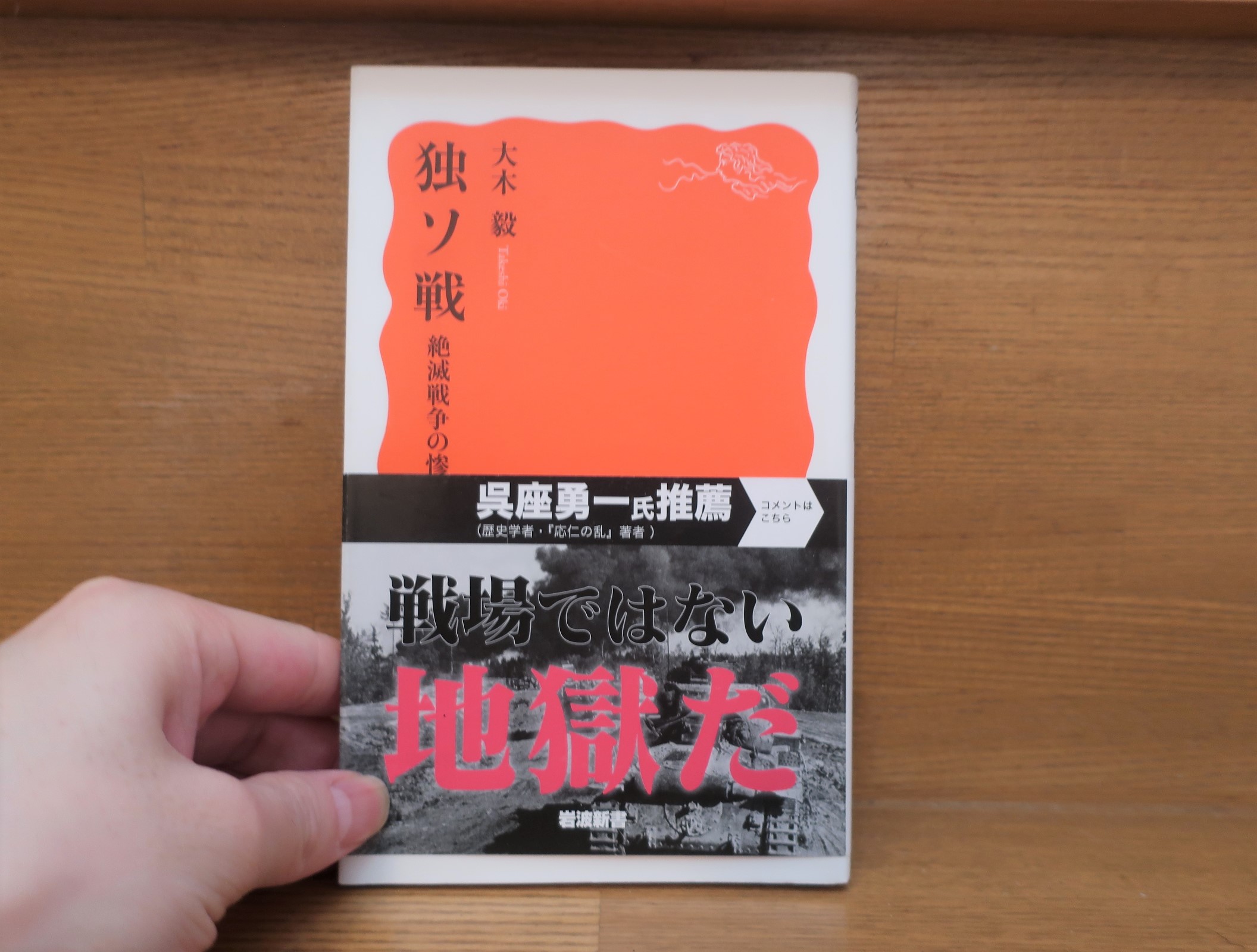
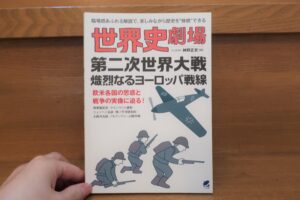
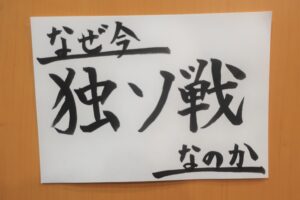


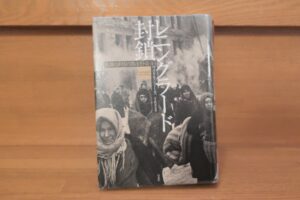
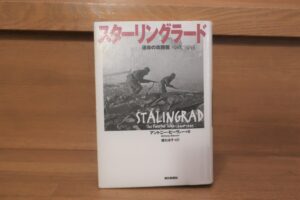
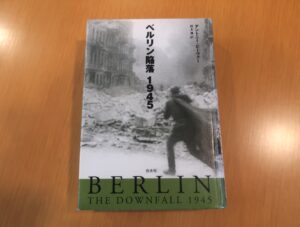



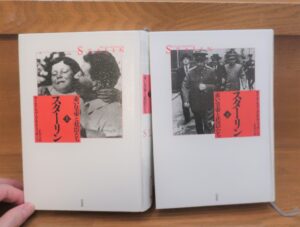

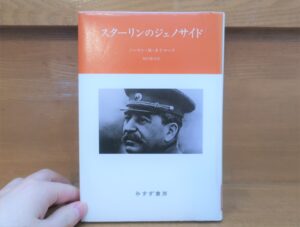






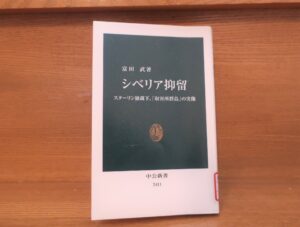
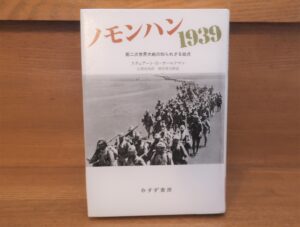
コメント